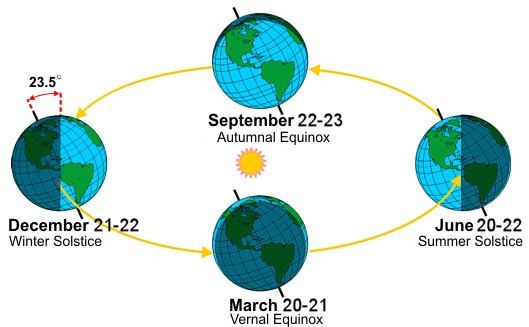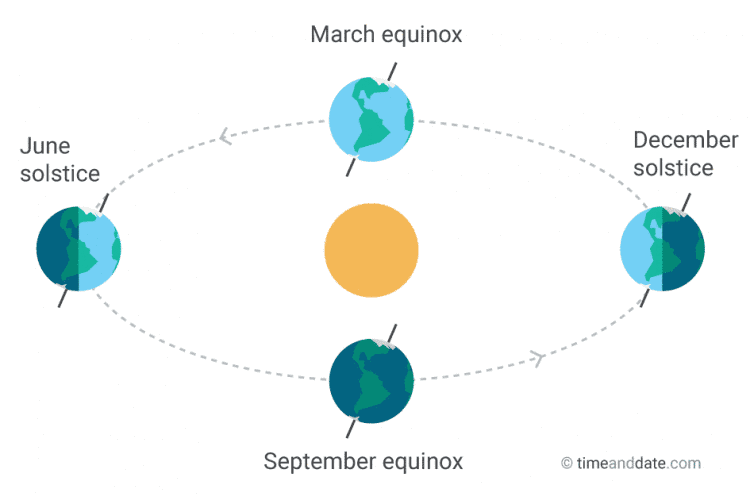 | ||
First of the year equinox skrillex official
An equinox is the moment in which the plane of Earth's equator passes through the center of the Sun, which occurs twice each year, around 20 March and 23 September.
Contents
- First of the year equinox skrillex official
- Equinoxes national geographic
- General
- Date
- Names
- Length of equinoctial day and night
- Geocentric view of the astronomical seasons
- Day arcs of the Sun
- Celestial coordinate systems
- Cultural aspects
- Equinoxes on other planets
- References

On an equinox, day and night are of approximately equal duration all over the planet. They are not exactly equal, however, due to the angular size of the sun and atmospheric refraction. To avoid this ambiguity, the word equilux is sometimes used to mean a day in which the durations of light and darkness are equal. See Length of equinoctial day and night for further discussion.

The word is derived from the Latin aequinoctium, aequus (equal) and nox (genitive noctis) (night).
Equinoxes national geographic
General

The equinoxes are the only times when the solar terminator (the "edge" between night and day) is perpendicular to the equator. As a result, the northern and southern hemispheres are equally illuminated. The word comes from Latin equi or "equal" and nox meaning "night".
In other words, the equinoxes are the only times when the subsolar point is on the equator, meaning that the Sun is exactly overhead at a point on the equatorial line. The subsolar point crosses the equator moving northward at the March equinox and southward at the September equinox.
The equinoxes, along with solstices, are directly related to the seasons of the year. In the northern hemisphere, the vernal equinox (March) conventionally marks the beginning of spring in most cultures and is considered the New Year in the Persian calendar or Iranian calendars as Nouroz (means new day), while the autumnal equinox (September) marks the beginning of autumn. In the southern hemisphere, the vernal equinox occurs in September and the autumnal equinox in March.
Date
When Julius Caesar established the Julian calendar in 45 BC, he set 25 March as the date of the spring equinox. Because the Julian year (365.25 days) is slightly longer than the tropical year, the calendar "drifted" with respect to the two equinoxes — such that in 300 AD the spring equinox occurred on about 21 March. By 1500 AD, it had drifted backwards to 11 March.
This drift induced Pope Gregory XIII to create a modern Gregorian calendar. The Pope wanted to continue to conform with the edicts concerning the date of Easter of the Council of Nicaea of AD 325, which means he wanted to move the vernal equinox to 21 March, which is the day allocated to it in the Easter table of the Julian calendar. However, the leap year intervals in his calendar were not smooth (400 is not an exact multiple of 97). This causes the equinox to oscillate by about 53 hours around its mean position. This in turn raised the possibility that it could fall on 22 March, and thus Easter Day might theoretically commence before the equinox. The astronomers chose the appropriate number of days to omit so that the equinox would swing from 19 to 21 March but never fall on the 22nd (although it can in a handful of years fall early in the morning of that day in the Far East).
Names
Length of equinoctial day and night
Day is usually defined as the period when sunlight reaches the ground in the absence of local obstacles. On the day of the equinox, the center of the Sun spends a roughly equal amount of time above and below the horizon at every location on the Earth, so night and day are about the same length. In reality, the day is longer than the night at an equinox. There are two reasons for this:
First, from the Earth, the Sun appears as a disc rather than a point of light, so when the centre of the Sun is below the horizon, its upper edge is visible. Sunrise, which begins daytime, occurs when the top of the Sun's disk rises above the eastern horizon. At that instant, the disk's centre is still below the horizon.
Second, Earth's atmosphere refracts sunlight. As a result, an observer sees daylight before the top of the Sun's disk rises above the horizon. Even when the upper limb of the Sun is 0.4 degrees below the horizon, its rays curve over the horizon to the ground.
In sunrise/sunset tables, the assumed semidiameter (apparent radius) of the Sun is 16 minutes of arc and the atmospheric refraction is assumed to be 34 minutes of arc. Their combination means that when the upper limb of the Sun is on the visible horizon, its centre is 50 minutes of arc below the geometric horizon, which is the intersection with the celestial sphere of a horizontal plane through the eye of the observer. These effects make the day about 14 minutes longer than the night at the equator and longer still towards the poles. The real equality of day and night only happens in places far enough from the equator to have a seasonal difference in day length of at least 7 minutes, actually occurring a few days towards the winter side of each equinox.
The times of sunset and sunrise vary with the observer's location (longitude and latitude), so the dates when day and night are equal also depend upon the observer's location.
At the equinoxes, the rate of change for the length of daylight and night-time is the greatest. At the poles, the equinox marks the transition from 24 hours of nighttime to 24 hours of daylight (or vice versa).
Geocentric view of the astronomical seasons
In the half-year centered on the June solstice, the Sun rises north of east and sets north of west, which means longer days with shorter nights for the northern hemisphere and shorter days with longer nights for the southern hemisphere. In the half-year centered on the December solstice, the Sun rises south of east and sets south of west and the durations of day and night are reversed.
Also on the day of an equinox, the Sun rises everywhere on Earth (except at the poles) at about 06:00 and sets at about 18:00 (local solar time). These times are not exact for several reasons:
Day arcs of the Sun
Some of the statements above can be made clearer by picturing the day arc (i.e., the path the Sun tracks along the celestial dome in its diurnal movement). The pictures show this for every hour on equinox day. In addition, some 'ghost' suns are also indicated below the horizon, up to 18° below it; the Sun in such areas still causes twilight. The depictions presented below can be used for both the northern hemisphere and the southern hemisphere. The observer is understood to be sitting near the tree on the island depicted in the middle of the ocean; the green arrows give cardinal directions.
The following special cases are depicted:
Celestial coordinate systems
The vernal equinox occurs in March, about when the Sun crosses the celestial equator south to north. The term "vernal point" is used for the time of this occurrence and for the direction in space where the Sun is seen at that time, which is the origin of some celestial coordinate systems:
Strictly speaking, at the equinox the Sun's ecliptic longitude is zero. Its latitude will not be exactly zero since the Earth is not exactly in the plane of the ecliptic. Its declination will not be exactly zero either. (The ecliptic is defined by the center of mass of the Earth and Moon combined.) The modern definition of equinox is the instants when the Sun's apparent geocentric longitude is 0° (northward equinox) or 180° (southward equinox). See the adjacent diagram.
Because of the precession of the Earth's axis, the position of the vernal point on the celestial sphere changes over time, and the equatorial and the ecliptic coordinate systems change accordingly. Thus when specifying celestial coordinates for an object, one has to specify at what time the vernal point and the celestial equator are taken. That reference time is called the equinox of date.
The autumnal equinox is at ecliptic longitude 180° and at right ascension 12h.
The upper culmination of the vernal point is considered the start of the sidereal day for the observer. The hour angle of the vernal point is, by definition, the observer's sidereal time.
Using the current official IAU constellation boundaries – and taking into account the variable precession speed and the rotation of the celestial equator – the equinoxes shift through the constellations as follows (expressed in astronomical year numbering in which the year 0 = 1 BC, −1 = 2 BC, etc.):
Cultural aspects
The equinoxes are sometimes regarded as the start of spring and autumn. A number of traditional (harvest) festivals are celebrated on the date of the equinoxes.
Equinoxes on other planets
Equinox is a phenomenon that can occur on any planet with a significant tilt to its rotational axis. Most dramatic of these is Saturn, where the equinox places its ring system edge-on facing the Sun. As a result, they are visible only as a thin line when seen from Earth. When seen from above – a view seen by humans during an equinox for the first time from the Cassini space probe in 2009 – they receive very little sunshine, indeed more planetshine than light from the Sun.
This lack of sunshine occurs once every 14.7 years on average. It can last a few weeks before and after the exact equinox. The most recent exact equinox for Saturn was on 11 August 2009. Its next equinox will take place on 6 May 2025.
One effect of equinoctial periods is the temporary disruption of communications satellites. For all geostationary satellites, there are a few days around the equinox when the sun goes directly behind the satellite relative to Earth (i.e. within the beam-width of the ground-station antenna) for a short period each day. The Sun's immense power and broad radiation spectrum overload the Earth station's reception circuits with noise and, depending on antenna size and other factors, temporarily disrupt or degrade the circuit. The duration of those effects varies but can range from a few minutes to an hour. (For a given frequency band, a larger antenna has a narrower beam-width and hence experiences shorter duration "Sun outage" windows.)
